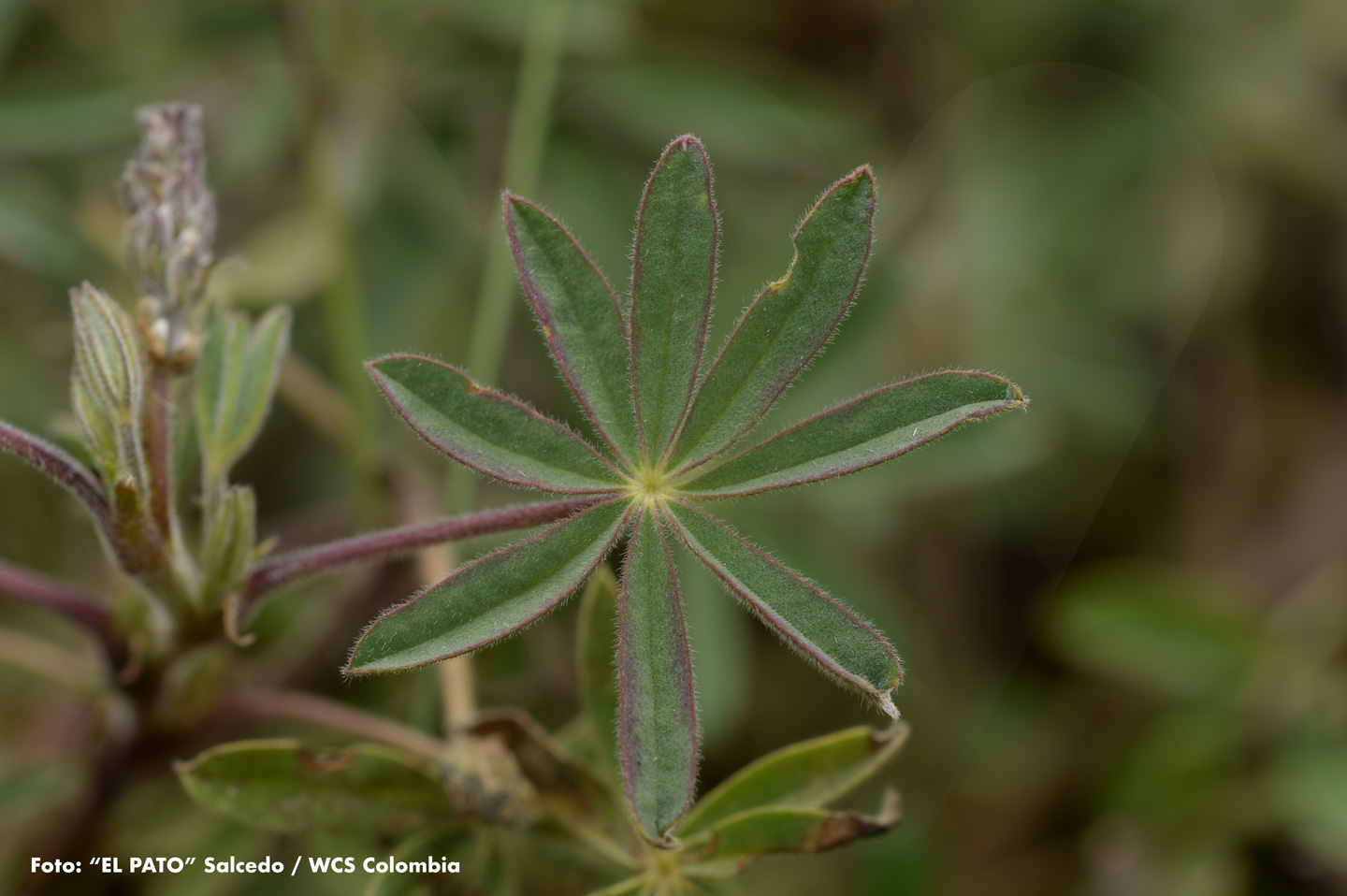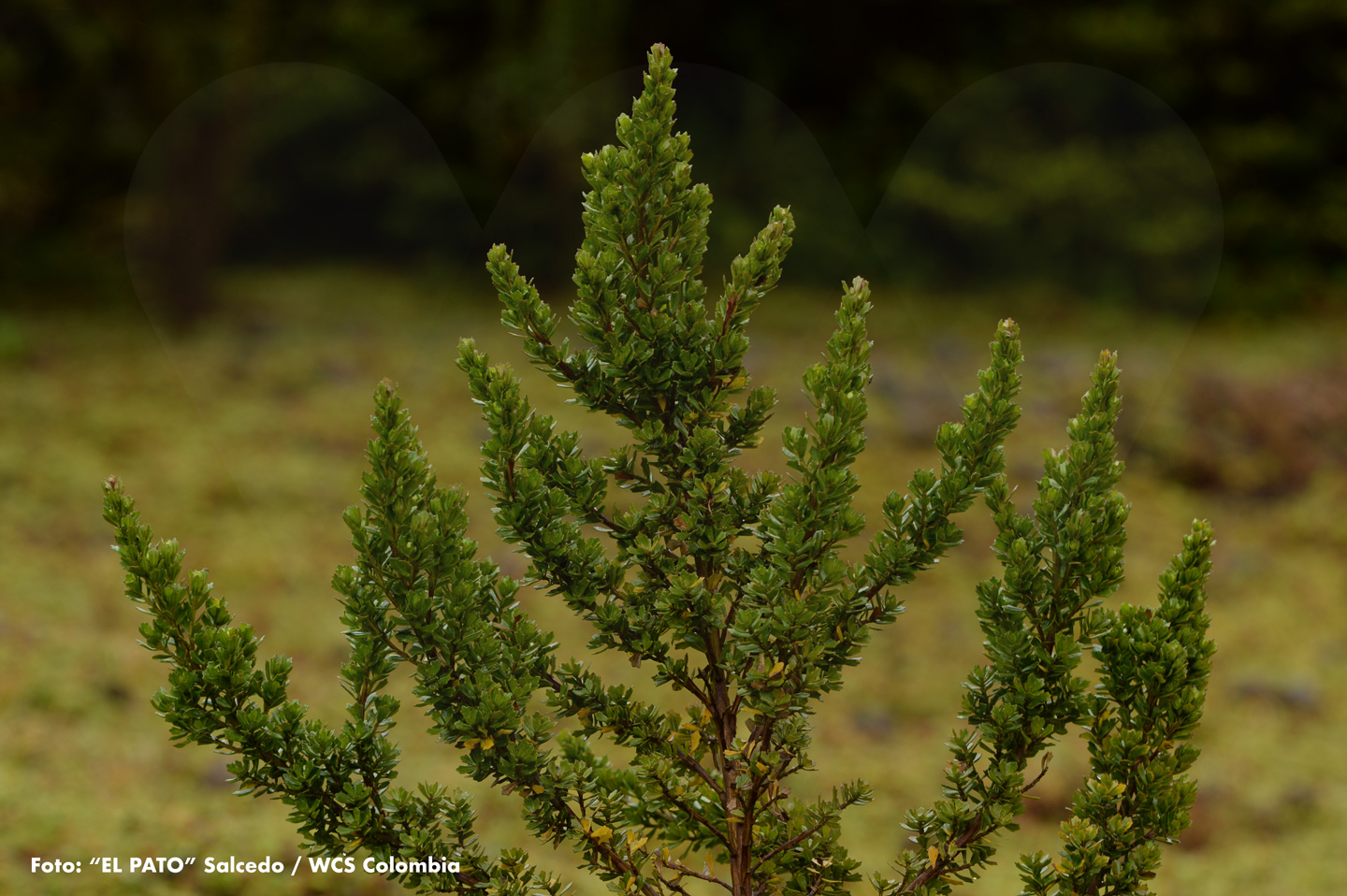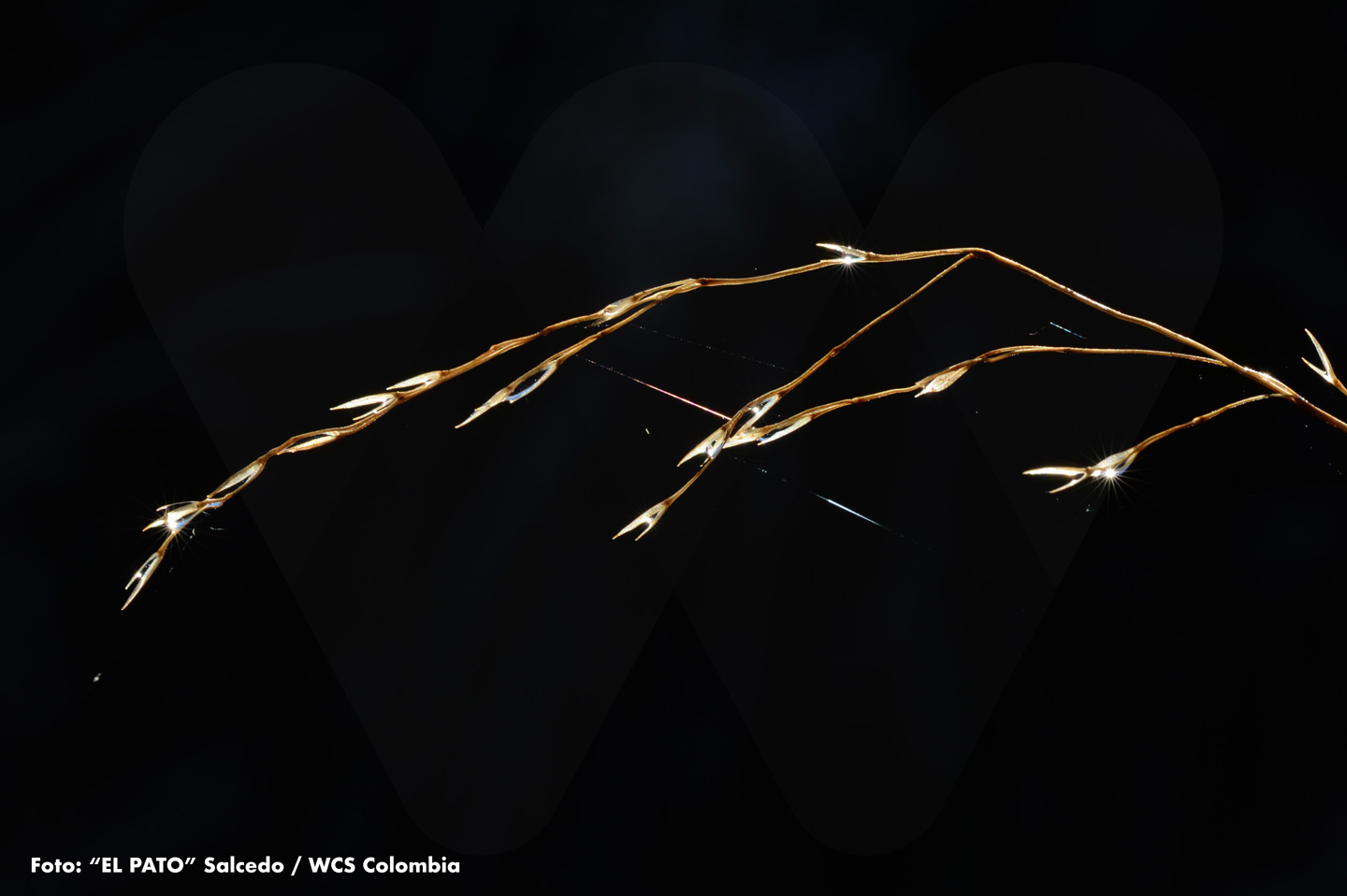 Espeletia hartwegiana
Espeletia hartwegiana
Commonly known as frailejón, it belongs to the Asteraceae family. It is a rosette-type plant that can live up to 40 years and typically reaches a height between five and six meters. It has a stem, which technically classifies it as a caulescent rosette.
 Lupinus tolimensis
Lupinus tolimensis
It belongs to the Fabaceae family and is commonly known as chocho. This herbaceous plant has an average lifespan of about two years. It does not grow very tall, typically ranging between 180 cm and 280 cm in height. Technically, it is classified as a heliophyte — a pioneer species, meaning it is among the first to appear during plant succession while waiting to receive abundant sunlight.
 Baccharis tericuneata
Baccharis tericuneata
Its common name, sanalotodo, suggests powerful medicinal properties. This plant belongs to the Asteraceae family. Once mature, individuals can live for over 10 years. It grows as a small, woody shrub, typically reaching between one and two meters in height, with branches sprouting from its base.
 Hypericum laricifolium
Hypericum laricifolium
This species is commonly known by three names: velillo, guarda rocío, and pino de páramo. It belongs to the Hypericaceae family. It is a shrub that can live for over 20 years. When fully grown, it ranges in height from about 0.5 meters up to 4 meters.
 Calamagrostis effusa
Calamagrostis effusa
Commonly known as pajonal, this grass belongs to the Poaceae family and is typically dominant in páramo landscapes. It grows in dense tufts (clusters of spikes that sprout from the same base) and is long-lived, with individuals reaching over 20 years of age. As an adult plant, it usually grows to a height of 80 centimeters to one meter.
Information taken from the book Restoration in Páramos – An Experience in the Central Andes of Colombia.
Traslated wtih AI support